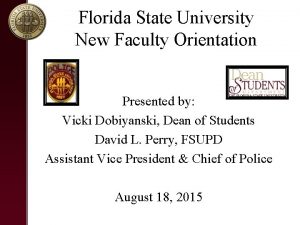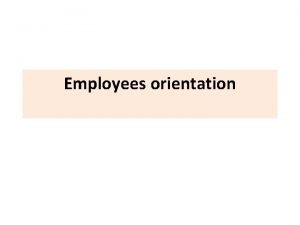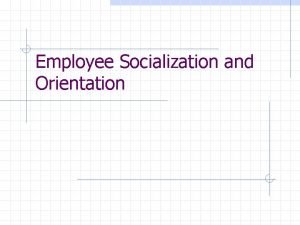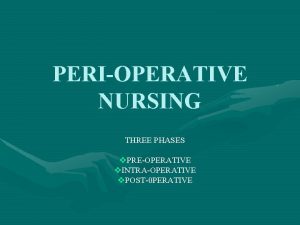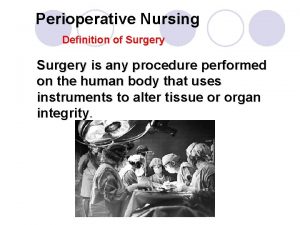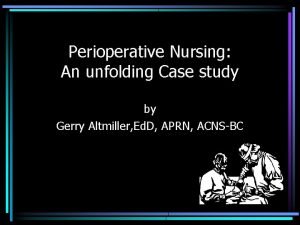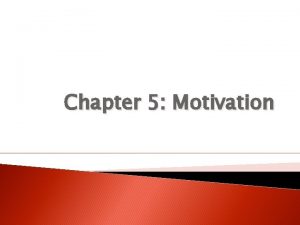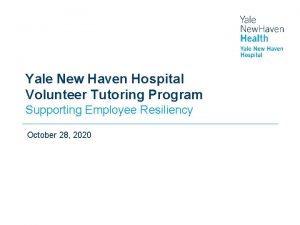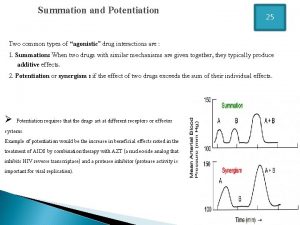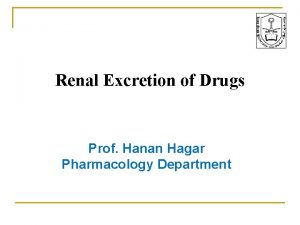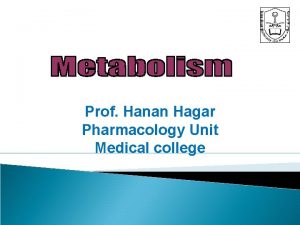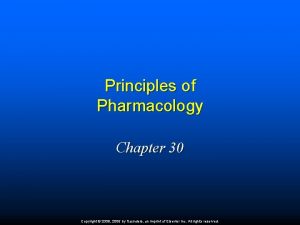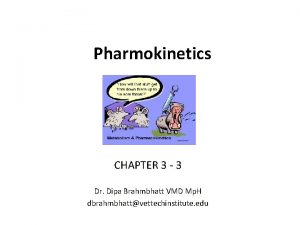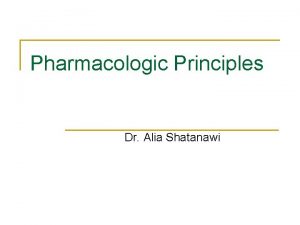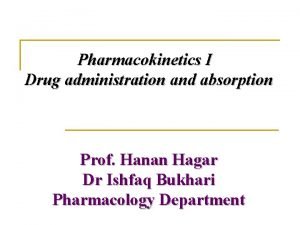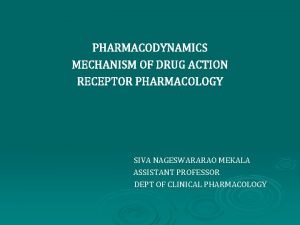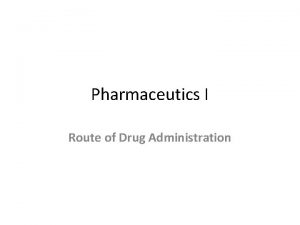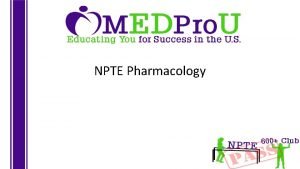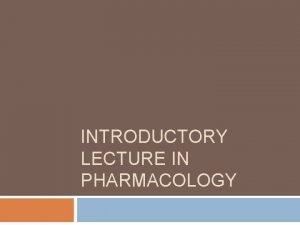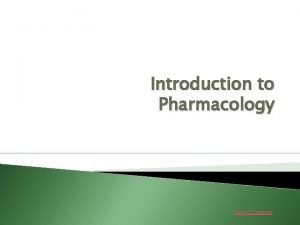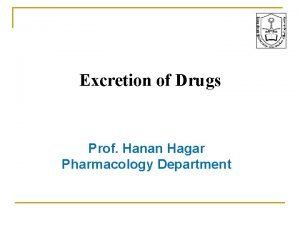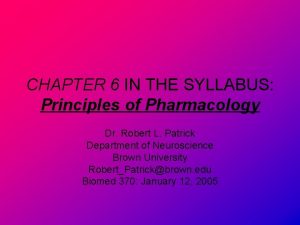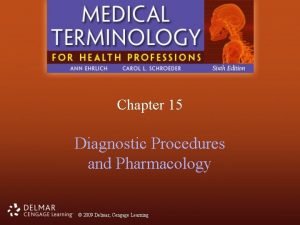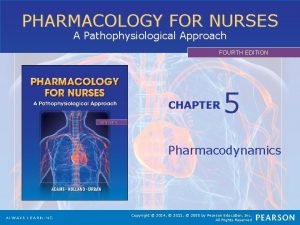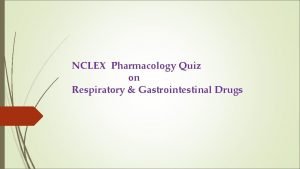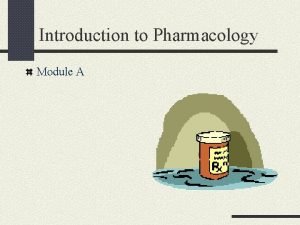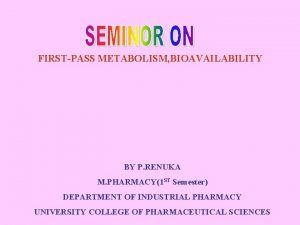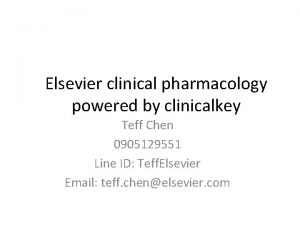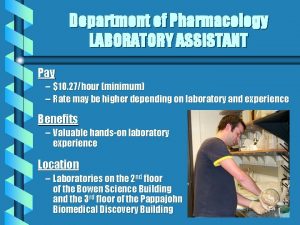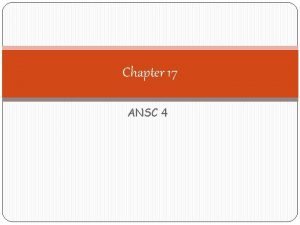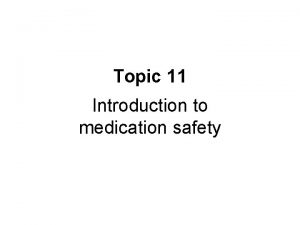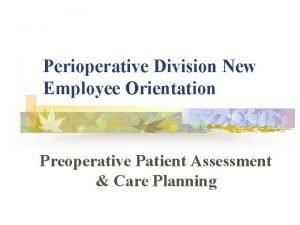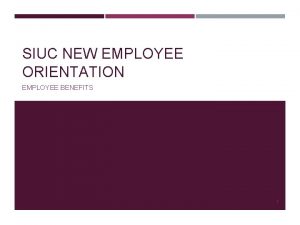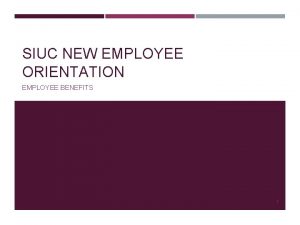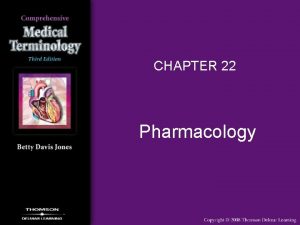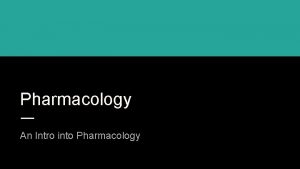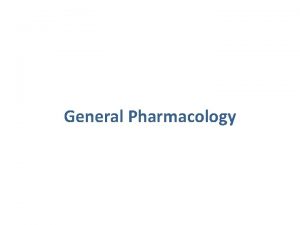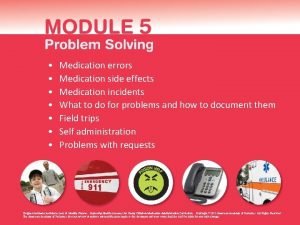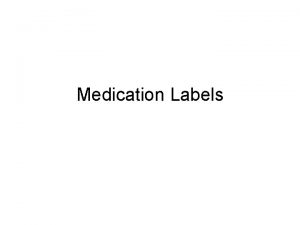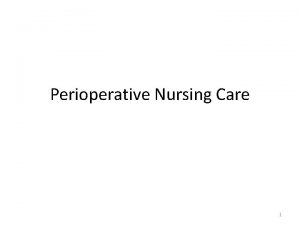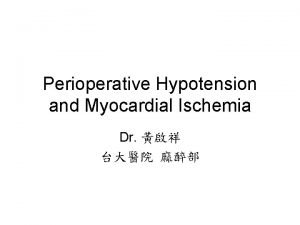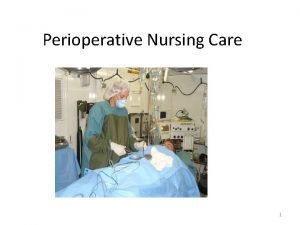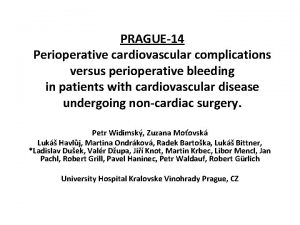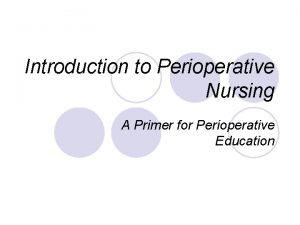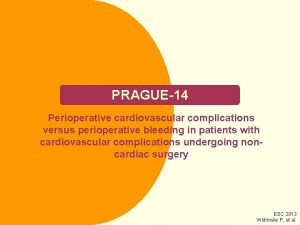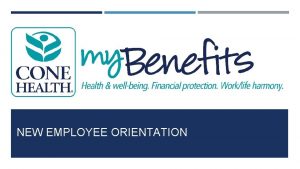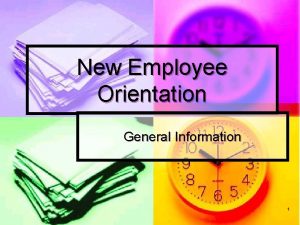Perioperative Division New Employee Orientation Pharmacology Safe Medication

















































- Slides: 49

Perioperative Division New Employee Orientation Pharmacology & Safe Medication Practices in the Operating Room

Objectives: ¢ ¢ ¢ Describe safe practices for medication administration in the OR Identify processes for drug/solution identification, verification & labeling Identify commonly used drugs in the surgical setting

Part I Safe Medication Practices in the Perioperative setting

What are the challenges for safe medication administration in the OR? ¢ ¢ ¢ Sensory distractions inherent in the environment (voices of personnel muffled by masks, sounds of suction, power equipment, monitors, etc can make it difficult to hear) Aseptic delivery of medications to the sterile field Most medication orders are given verbally or delivered via a preference card Fast-paced environment Surgeon requires an intermediary to receive medications AORN, 2007

AORN Position Statement ¢ “the perioperative registered nurse administering medications must have a sound knowledge of the medication’s intended: • • Therapeutic effects Side effects Contraindications Pharmacology calculations prior to administration” AORN, 2007

5 “Rights” of Medication Administration: ¢ RIGHT____: 1. 2. 3. 4. 5. Patient Medication Dosage Route Time *Don’t forget to note patient’s allergies*

Verification Process ¢ Both Circulator & Scrub should verbally and visually verify all medications delivered to the sterile field, including: l l l ¢ ¢ Medication strength Medication dosage Expiration date All drug calculations must be verified by two people (one must be an RN) All containers from medications used during any procedure must remain in the OR until the conclusion of the procedure

Circulator & scrub verify medication name, dose, strength & expiration date

Delivering Medications to the Sterile Field Deliver one medication to the sterile field at a time, verifying information for each medication as it is delivered ¢ Do not remove stoppers from medication vials – use a syringe or a transfer device ¢

Delivering Medications to the Sterile Field When delivering solutions to the sterile field take care to avoid splashing ¢ Do not recap irrigation bottles – if contents of entire bottle are not needed the unused portion must be discarded ¢

Staff Changes ¢ At shift change or break relief: l all medications on and off the sterile field and their labels should be noted and verified concurrently by the staff relieving and the staff being relieved

JCAHO Recommendations ¢ Label all medications, medication containers (e. g. , syringes, medicine cups, basins), or other solutions on and off the sterile field in perioperative setting l Label all medication containers on the sterile field, even if there is only one medication involved.

All medications, both on & off the sterile field, must be labeled – even if there is only one medication on the field Labels should state: name of drug, strength & dosage

Verbal Orders ¢ All verbal orders will be confirmed by the “read-back” process – the person receiving the order restates the order given and the prescribing provider verifies that the receiver’s understanding of the order is correct

Medication Reconciliation ¢ JCAHO NPSG # 8: Accurately & completely reconcile medications across the continuum of care in order to communicate all of the patient’s medications when the patient is referred or transferred within or outside the organization ¢ AT UAB the Medication Reconciliation form is completed during patient’s admission to hospital ¢ Accompanies patient throughout their hospitalization to provide all caregivers with a comprehensive resource for the patent’s medications (including OTC drugs, herbal supplements & immunizations) and allergies

Part II ¢ Identify commonly used medications in the perioperative setting: 1. 2. 3. 4. 5. Antibiotics Hemostatic Agents Drugs for Local Anesthesia Miscellaneous Drugs Dantrolene

Antibiotics Most commonly used antibiotic in the OR setting at UAB Hospital: ¢ Cefazolin Sodium (Ancef, Kefzol) ¢ Bacitracin ¢ Vancomycin ¢ Tobramycin (Nebcin) ¢

Cefazolin Sodium First-generation cephalosporin ¢ Active against gram-positive cocci, including S. aureus, S. epidermis, S. pyogenes & S. pneumoniae ¢ Not effective against Methcillin resistant S. aureus (MRSA) ¢ Commonly used in the OR as an additive to Na. Cl for antibiotic irrigation ¢ Mixed according to surgeon’s preference, usually 1 gram/1000 cc Na. Cl ¢

Contraindications to the Use of Cefazolin: Contraindications: allergy to cephalosporins ¢ Approximately 5 – 10% of people allergic to penicillins also have a cross -allergenicity to cephalosporins. This is a particular concern in patients who are severely allergic to Penicillin ¢

Bacitracin Effective against gram positive cocci, specifically staphylococcus ¢ Used in the OR for antibiotic irrigation ¢ Mixed according to the surgeon’s preference, usually 50, 000 units Bacitracin/1 L Na. CL for irrigation ¢ Store in refrigerator until use ¢

FYI… ¢ If you hear someone ask for “Bug Juice” in the OR— that is a reference to antibiotic irrigation, NOT a drink made from squashed bugs!

Vancomycin Effective against: gram-positive bacteria, including MRSA ¢ Added to bone cement to make “antibiotic beads” to treat bone or joint infections— the Vancomycin is slowly released in a concentrated area ¢ Mixed per surgeon’s preference: generally 1 Gm/package of bone cement ¢

Tobramycin (Nebcin) Effective against S. aureus, E. coli, Pseudomonas, Serratia, Klebsiella ¢ Added to bone cement for antibiotic beads or spacers 1. 2 Gm powder/1 package of bone cement ¢

Hemostatic Agents Thrombin ¢ Absorbable gelatin sponge (Gelfoam, Surgifoam) ¢ Microfibrillar collagen (Avitene) ¢ Oxidized Cellulose (Surgical, Oxycel) ¢ Fibrin Sealant (Tisseal) ¢ Gelatin Matrix (Flo. Seal) ¢ Epinephrine (Adrenaline) ¢

Thrombin ¢ ¢ Indicated for controlling intraoperative capillary bleeding and oozing, cannot control arterial bleeding Packaged as powder with sterile diluent Available in spray kit- can be sprayed into area where hemostasis is desired Cannot be injected into blood vessels—will cause intravascular clotting

Absorbable Gelatin Sponge Examples: Gelfoam, Surgifoam, Gelfilm ¢ Mode of action not fully understood ¢ Absorbs fluid (up to 45 times its weight in blood) and puts pressure on the bleeding surface ¢

Absorbable Gelatin Sponge: Use May be cut to desired size ¢ May be applied dry, or soaked with saline or thrombin spray prior to use ¢ When used in confined spaces, may cause excess pressure when it expands (of particular concern in neurosurgical & ¢ spine cases)

Microfibrillar Collagen ¢ ¢ Example: Avitene Available in sheets or powder Provides a surface for platelet aggregation Apply with dry forceps, as it will adhere to moist surfaces such as gloves

Oxidized Cellulose ¢ ¢ ¢ Examples: Surgicel, Oxycel Available in sheets which can be cut to the desired size Applied dry Blood bonds with the oxidized cellulose to form artificial clot May be left in wound or removed after clot dries

Fibrin Sealant Examples: Eviseal, Tisseal ¢ Designed for hemostasis and tissue sealing (ex: can aid dura repair during spine surgery) ¢ Stored in in refrigerator ¢

Gelatin Matrix (Flo. Seal) ¢ ¢ ¢ Promotes hemostasis Stored at room temperature in storeroom, not pharmacy Does not need to be warmed prior to use Not for use in ophthalmic procedures Not for use in presence of infection ¢ ¢ ¢ Flo. Seal packaged with Thrombin, which must be mixed with gelatin matrix prior to use Use within 2 hours of reconstitution Applying pressure with moist sponge to site after applying Flo. Seal will hasten clot formation

Epinephrine (aka Adrenaline) Causes vasoconstriction and reducing bleeding ¢ Added to irrigation for Shoulder Arthroscopy to reduce intraoperative bleeding and improve visualization ¢

Drugs for Local Anesthesia Block nerve conduction in peripheral nerves Most commonly used local anesthetics in the OR setting: ¢ Lidocaine Hydrochloride (Xylocaine, Lidocaine) ¢ Bupivacaine Hydrochloride (Marcaine, Sensorcaine) ¢

Lidocaine: ¢ Available for local anesthesia in concentrations of: 0. 5% l 1% l Also available for topical use as topical liquid, jelly and viscous liquid ¢ Fast onset of anesthetic effect ¢ Duration of effect: 1 – 2 hours ¢

Lidocaine-Maximum Dose 4. 5 mg/kg/dose ¢ Lidocaine with epinephrine added: 7 mg/kg/dose Do not repeat dose within 1½ hours ¢ Signs of Lidocaine toxicity: anxiety, seizures, arrhythmias, hypotension, blurred vision, tinnitus ¢

Bupivacaine Available for local anesthesia in concentrations of: ¢ 0. 25% ¢ 0. 5 % ¢ Slow onset of anesthetic effect ¢ Duration of anesthetic effect: 4 – 12 hrs ¢

Epinephrine & Local Anesthetics: Addition of epinephrine to local anesthetics slows the absorption of the drug and prolongs the anesthetic effect ¢ Epinephrine added to the local anesthetic also reduces bleeding at the surgical site ¢

Contraindications in the use of Epinephrine: ¢ ¢ Avoid the use of epinephrine-containing local anesthetics in areas of the body that have a limited blood supply: fingers, toes, ears, nose Use of epinephrine in these areas can compromise blood supply and result in tissue damage No Epinephrine here!

Other drugs commonly used in the OR Heparin ¢ Papaverine ¢ Dyes – Methylene Blue, Indigo carmine, Fluorescein ¢

Heparin Commonly used for vascular surgery in heparinized saline solution ¢ Standard UAB heparin-saline recipe: Heparin 5000 units 500 cc IV normal saline (0. 9%) ¢

Papaverine Causes vasodilation by relaxing smooth muscles ¢ Used in vascular surgery to prevent or relieve vasospasms ¢

Dyes Methylene blue & Indigo Carmine: may need to be diluted before use ¢ Fluorescein ¢

Dantrolene (Dantrium) Skeletal muscle relaxant ¢ Drug of choice to treat Malignant Hyperthermia, a life-threatening anesthetic emergency ¢ Supply maintained in the OR area –in the Malignant Hyperthermia kit behind the 7 th & 5 th Floor General OR desks ¢

Dantrolene Reconstitution ¢ ¢ Use only preservative-free sterile water Add 60 cc sterile water to each 20 mg vial of dantrolene- shake vial until solution is clear. Dantrolene is very difficult to mix up. Initial dosage 2. 5 mg/kg IV push – rapidly, preferably through a large bore needle Administer drug until symptoms of MH subside

IV Fluid Options: ¢ ¢ Crystalloids: saline solutions, dextrose solutions, multiple-electrolyte solutions (Lactated Ringers) Colloids: albumin, plasma, Dextran, Hetastarch (Hespan), blood

Irrigation Solutions ¢ Most commonly used: 0. 9% saline (AKA Normal Saline)- this is an isotonic solution, osmotic balance approximates that of normal plasma ¢ Sterile water & glycine are irrigation solutions sometimes used in GU procedures, including as cystoscopy and transuretral removal of the prostate ¢ Unlike saline, sterile water & glycine do not conduct electrical current—and so can be used for GU procedures using electrocautery

Hospital Formulary ¢ ¢ ¢ To view UAB Hospital Drug Formulary on-line: Go to: SCR web site Click on: UAB Hospital Click on: Reference Click on: Drug Formulary

Remember: ¢ ¢ Any time you have questions or concerns about medications or medication dosages, please consult your friendly Satellite Pharmacist! Pharmacist available in 7 th Floor OR satellite pharmacy or by pager # 7584

References ¢ ¢ ¢ AORN (2007). Standards, Recommended Practices & Guidelines Gutierrez, K. (1999) Pharmacotherapeutics: Clinical Decision Making in Nursing Roth (1995) Perioperative Nursing Core Curriculum Rothrock, J. (2002) Alexander’s Care of the Patient in Surgery Springhouse Corporation: Nursing Drug Handbook
 Nih new employee orientation
Nih new employee orientation Fsu dean of students case management
Fsu dean of students case management New employee orientation
New employee orientation Employee attitudes and employee performance
Employee attitudes and employee performance Safe feed safe food
Safe feed safe food Safe people safe places
Safe people safe places Employee safety orientation quiz answers
Employee safety orientation quiz answers Serial vs disjunctive
Serial vs disjunctive What is ethnocentric orientation
What is ethnocentric orientation Phases of preoperative care
Phases of preoperative care Hemivac
Hemivac Perioperative nursing case study
Perioperative nursing case study Canadian perioperative guidelines
Canadian perioperative guidelines Intraoperative care definition
Intraoperative care definition Short division vs long division
Short division vs long division Polynomial long division definition
Polynomial long division definition Long division short division
Long division short division Synthetic division polynomials
Synthetic division polynomials Employee motivation a powerful new model
Employee motivation a powerful new model Ynhh hr connect
Ynhh hr connect New richmond wi teacher charged
New richmond wi teacher charged Venipuncture radiologic technologist
Venipuncture radiologic technologist Summation drug interaction
Summation drug interaction Zero order elimination drugs
Zero order elimination drugs What is ion trapping in pharmacology
What is ion trapping in pharmacology Hagar conjugation
Hagar conjugation Chapter 30 principles of pharmacology
Chapter 30 principles of pharmacology Ion trapping
Ion trapping Alia drug testing
Alia drug testing What is pharmacology
What is pharmacology What are the different routes of drug administration
What are the different routes of drug administration Receptors in pharmacology
Receptors in pharmacology First pass metabolism definition pharmacology
First pass metabolism definition pharmacology Alpha 1 vs alpha 2 receptors
Alpha 1 vs alpha 2 receptors What is pharmacology
What is pharmacology Slidetodoc
Slidetodoc Therapeutic index
Therapeutic index What is ion trapping in pharmacology
What is ion trapping in pharmacology What is pharmacology
What is pharmacology Chapter 15 diagnostic procedures and pharmacology
Chapter 15 diagnostic procedures and pharmacology Pharmacology for nurses: a pathophysiological approach
Pharmacology for nurses: a pathophysiological approach Respiratory pharmacology quiz
Respiratory pharmacology quiz Pharmacology module
Pharmacology module First pass metabolism definition pharmacology
First pass metabolism definition pharmacology Clinical pharmacology powered by clinicalkey
Clinical pharmacology powered by clinicalkey Pharmacology of drugs acting on respiratory system
Pharmacology of drugs acting on respiratory system Pharmacology pay
Pharmacology pay Ansc 497
Ansc 497 Toxicology and applied pharmacology
Toxicology and applied pharmacology Rationale meaning in pharmacology
Rationale meaning in pharmacology

